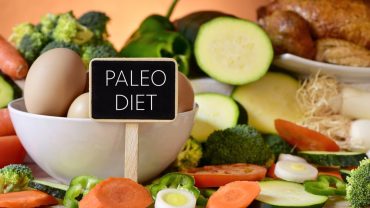20 Healthy Foods to Control Diabetes (Diabetes Diet)
What is Type II Diabetes
When you have type II diabetes, it becomes absolutely crucial for you to adhere to a diet that won’t cause your diabetes to progress and cause complications like heart disease, high blood pressure, or stroke.
This means that some foods will absolutely help you manage this condition, while others will exacerbate the symptoms that you may experience.
Finding the best types of food for diabetics can be somewhat daunting because no food is perfect, but in this guide, we’re going to highlight some that can provide you with great benefits.
Before we hit on these particular foods, let’s learn more about the condition, and how to control diabetes through adding certain foods to your diet.
Type II diabetes tends to be caused by either genetics or lifestyle.
Due to these factors, your body may develop insulin resistance, which in turn causes your body to manage less efficiently the insulin that’s created in the pancreas.
Insulin is used to transport glucose (sugars) to the cells, and when there’s insulin resistance, this process is greatly stymied.
As a result of this, sugars build up in the blood, which can lead to a plethora of adverse health conditions.
Once you have diabetes, it’s imperative that you eat the foods that will help you manage your insulin resistance.
When you’re trying to make healthy eating decisions, try to find foods that are rich in:
- Flavonols– certain flavonols have been found to reduce diabetics’ blood glucose levels. In fact, these food components can help prevent diabetes in those that aren’t already suffering from the condition (1).
- Polyphenols– Polyphenols can prevent your pancreas from suffering from glucose toxicity. While its benefits aren’t fully understood, these food components also have the ability to protect against free radicals in the bloodstream (2,3).
- Antioxidants – Antioxidants have a lot of dietary benefits. In fact, these components can actually protect against some of the more devastating symptoms of diabetes like diabetic neuropathy and retinopathy (4).
- Chlorogenic Acid– This component has been found to have a great effect on glucose transport. It reduces the amount of glucose that ends up in the bloodstream (5).
- Acetic Acid– This is the acid that makes vinegar tangy, and it’s been found to inhibit the body’s production of insulin, which will reduce blood glucose levels significantly (6).
It’s important to understand that living with this disease doesn’t mean that you have to deprive yourself of your favorite flavors at all times.
There are many delicious foods for diabetics that are easy to prepare, and that can be just as satisfying as the staples of your old diet that you’ve grown used to.
It’s also important to understand that no food is truly forbidden when you have diabetes; it’s just important that you learn to moderate your diet, and the more you eat the foods that we cover on this list, the better you’ll feel.
While there are foods out there that you should take in moderation, there are a wide variety of foods that are perfectly fine to consume regularly.
20 Foods for Diabetics
Apple Cider Vinegar
As mentioned previously, the primary component in most vinegar is acetic acid.
In the case of apple cider vinegar, the acid forms when the sugars in apple juice are broken down via fermentation.
As a result, there is only about a gram of carbohydrates per tablespoon of apple cider vinegar.
In more than a few studies, as a result of its component acid, it’s been discovered that apple cider vinegar can reduce the amount of glucose that works its way into the bloodstream, which of course, will reduce blood sugar levels (7).
Additionally, when you’re trying to lead a healthier lifestyle, this type of vinegar has also been found to curtail hunger and help you feel fuller, faster.
If you want to add this to your diet, mix about two tablespoons of the vinegar into your water before bed.
Chia
Chia seeds, which are also known as Salvia hispanica, are a newly-realized superfood that’s only recently been making the rounds in the U.S.
One of its best features is its high fiber content; in fact, chia seeds have about 10g of dietary fiber per ounce (8).
In addition to the fact that they are very healthy in just about any diet, these seeds have also been shown in studies to be very useful for helping sufferers cope with diabetes.
The fibrous content means that chia won’t increase your blood sugar, and the extra fiber will also slow down digestion, which is beneficial for helping your body absorb glucose into its cells (9).
These seeds are also great for weight loss for precisely this reason; fewer calories are absorbed and you’ll feel less hungry.
Broccoli
Veggies, in general, are typically excellent foods for any diabetic, but broccoli might be the best of them all.
Cruciferous vegetables like broccoli have sulforaphane, which in recent studies has been shown actively to reduce blood glucose levels.
In fact, with added broccoli, sufferers can experience a reduction of blood glucose by as much as 10 percent.
Additionally, broccoli also is very low in calories and is packed with helpful nutrients, so adding the cruciferous veggies to your diet will actually improve your overall health.
Add to this the fact that it only contains about three grams of digestible carbs, and you’ll quickly see why this veggie is so beneficial.
Flaxseed
Similarly to chia seeds, flaxseeds are an excellent food for general health, but they’ve also been found to have components that can reduce the blood sugar levels that you experience after eating.
In fact, in recent studies, flax has also been shown to reduce insulin resistance in diabetics, and even contribute to a drop in A1c levels.
Like chia, flax is high in fiber, which means that eating this seed can reduce the rate of digestion.
When you digest slower, there’s a higher amount of absorption, and you’ll even feel fuller as a result.
The chief problem with flaxseed is that you won’t be able to digest and absorb it in its intact state, which means that you’ll have to find ground flaxseed or grind it yourself for maximum benefit.
Squash
There’s a lot that you can do with squash, due to the fact that it’s such a versatile vegetable.
There is also a plethora of great varieties that include butternut, zucchini, and acorn squash.
In fact, some people spiralize their squash and make delicious pasta from it that’s very healthy and vitamin-rich.
Squash is also packed with antioxidants, which reduce the prevalence of free radicals in the bloodstream that can inhibit the activity of insulin.
Additionally, some winter squash contains a chemical called lutein, which can actually be very beneficial to diabetics’ eyes who are suffering from retinopathy and macular degeneration.
The benefits of each type of squash vary, especially when it comes to carbs, but overall, these vegetables contain some excellent diabetes-fighting components (12).
Konjac Yam Noodles (Shirataki)
Noodles seldom are known for being particularly healthy, but in the case of shirataki, these vegetable noodles can be considered a superfood.
Similarly to the spiralized noodles that you can make from some types of zucchini and the noodle-like strands of spaghetti squash, shirataki is made from a type of yam and is rich in vitamins.
Similarly to some of the other foods on this list, shirataki is very rich in fiber – in this case, a fiber called glucomannan, which means that it can greatly reduce blood glucose spikes during digestion.
Additionally, this type of processed yam noodle can also greatly curtail your hunger by making you feel fuller (13).
Shirataki is also very low in carbs and is amazingly low in digestible carbs; in fact, you only get about a gram of carbs per serving of shirataki.
While it does take some preparation, shirataki is a good choice for diabetics.
Strawberries
Many diabetics think that because the fruit is sweet that it’s completely verboten when it comes to a diabetic diet.
Fortunately, this isn’t the case; strawberries are an excellent diabetic-friendly fruit that is relatively low in sugar.
The key diabetes-fighting components of strawberries are antioxidants called anthocyanins, which are the chemicals that make them red.
These chemicals reduce the action of free radicals and can reduce both of the body’s insulin and cholesterol.
Add to this the fact that these fruits are also relatively fiber-rich, and you’ve got a very healthy berry.
Strawberries are also very high in vitamin C, which is a health boost that can also reduce blood glucose (16).
Strawberries can be eaten in smoothies, or as an accompaniment to other diabetes-fighting foods like Greek yogurt.
Sweet Potatoes
Sweet potatoes, as a fiber-rich food, have been found actively to reduce HbA1c and can also reduce fasting blood sugar by as much as 15 points.
Sweet potatoes are also a food that is rich in the aforementioned anthocyanins that give the sweet potatoes their orange tint.
Not only are these great for the tuber’s unique coloration, but they also serve as powerful antioxidants that can reduce free radicals and provide anti-inflammatory and antiviral properties.
It’s easy to incorporate sweet potatoes into a diabetic diet; they’re great with other diabetes-fighting foods like cinnamon.
They’re also great air-fried up into fries or simply baked like traditional potatoes (18).
Quinoa
While many consider quinoa to be a grain, it actually is more similar to leafy greens than it is to traditional grains like rice or oats.
That being said, quinoa is loaded with fiber, which is great for your overall digestive health, as fiber can greatly slow digestion so that your food can be better absorbed and thus help keep your blood glucose low.
Quinoa makes for a great grain-like addition to most meals, and it’s a superb substitute for rice, which is not very good for people with diabetes.
Quinoa has nine amino acids and is dense in protein.
Additionally, with its fiber-dense content, this food is great at making you feel fuller, quicker (19).
Walnuts
Walnuts are rich in alpha-linolenic acid, which is great for reducing inflammation.
Simply put, walnuts have a lot of health benefits; they’ve been found to have anti-cancer, antioxidant, antiviral, and anti-cholesterol features.
Each of these can help mitigate many of the symptoms that arise as a result of diabetes.
They are also rich in fiber, which as you might know by now, is great for fighting the insulin resistance of diabetes by slowing digestion (22).
Additionally, walnuts have great synchronicity with a wide variety of foods.
You can simply snack on walnuts in their shells; this allows for the slow snacking that is beneficial to the digestive process.
You can also add crushed walnuts to a wide array of dishes as a topping – from breakfasts to desserts.
Olive Oil
There are a lot of health benefits in olive oil, especially if you use the extra-virgin variety, but all types of olive oil are good for helping diabetics manage their condition.
This type of oil is rich in a monounsaturated fat called oleic acid.
This can improve triglycerides and boost HDLs which are often at higher levels in those suffering from diabetes.
Extra-virgin varieties can even lower blood glucose and cholesterol at a heightened rate (23).
And olive oil is the type of fat that seems to reduce the risk of heart disease the best (24).
In your daily diet, you can incorporate olive oil into any of the foods in which you use corn or vegetable oil.
Additionally, extra-virgin olive oil makes for a great accompaniment for foods like French bread, and it’s great when tossed in a healthy, diabetic-friendly pasta or salad.
Turmeric
Turmeric is one of the spices that you can use for seasoning that is very healthy for those suffering from diabetes.
Turmeric has been used for thousands of years in India and Asia, and as a result, the usually high-sugar staple foods like rice and breads that can cause diabetes are greatly controlled in Indian regional cuisine when combined with turmeric.
Turmeric’s primary diabetes-fighting component is curcumin, which is what gives curry dishes their flavor.
This component actually reduces inflammation in the kidneys, and it can even reduce the causes of insulin resistance.
As a result, turmeric is a great additive in a diabetic-friendly diet.
Additionally, this seasoning is great at preventing kidney disease and heart problems.
Fortunately, there are a plethora of ways to add turmeric to your diet (25, 26, 27).
Cinnamon
Cinnamon is a delicious food additive that can bring the flavor out in just about any meal; the spice also has a lot of health benefits for diabetics that are looking to lower their blood glucose.
Not only does this spice accent sweet dishes, but savory dishes can be enhanced as well.
The key ingredient in cinnamon that brings value to the diabetes sufferer is its antioxidant concentration; in fact, out of all the spices, cinnamon has the highest concentration of antioxidants behind cloves.
Antioxidants directly help ward off oxidative stress, which is a potential cause of type II diabetes.
For those that already are experiencing the condition, cinnamon can imitate insulin and aid in the delivery of glucose into cells, which means that less glucose gets into the bloodstream (29).
Collard Greens
When you’re looking to reduce the dangerous inflammation that is a symptom of diabetes, then collard greens are a good option.
These leafy greens are a great source of vitamin C, which can also lower cortisol in the body.
Similarly to broccoli, collard greens fall into the subcategory of cruciferous vegetables, which means that they can serve as a good place to get extra alpha-lipoic acid, i.e. is a component that can boost your body’s antioxidant levels.
It can also reduce the effects of the nerve damage that is caused by diabetic neuropathy (31).
You don’t have to have collard greens as a side; collard greens can be a great salad, and you can even combine them with other diabetic-friendly components to make a delicious smoothie (32).
Kale
Another leafy green veggie, kale, is a great option for anyone looking to manage their blood sugar and insulin levels.
Like other veggies of its type, kale is rich in vitamin C, which means that it reduces inflammation and fasting blood sugar levels.
This vegetable has also become very popular lately in smoothies, as chips, and served in salads (33).
Kale is also a very-high-fiber vegetable, which means that consuming it can greatly improve your digestion.
This means that it can help reduce your blood sugar levels this way as well.
Spinach
Spinach and collard greens are two leafy greens that can reduce the risk of getting diabetes, but they are also great at helping diabetics manage the disease as well (34).
This leafy green also is rich in vitamins and antioxidants, which means that oxidative stress is reduced and the causes of retinopathy can be curtailed significantly.
Spinach is also packed with the same vitamin C that makes collard and kale greens so beneficial to diabetics.
All in all, spinach is a nutrient-packed vegetable that should be incorporated into any diabetic’s diet; you can even drink the juice for a vitamin boost.
Psyllium Husk
As with other fiber-rich foods, psyllium husks work best by slowing digestion so that glucose is better distributed in the cells and insulin resistance is mitigated.
While this food has traditionally been used as a means to fight constipation, it is also a good food additive to use in the preparation of baked goods like bread.
And you can simply take psyllium husk as a supplement before meals; in fact, adding this to your meals can have several benefits, even outside of its ability to aid in digestion and blood sugar absorption for diabetics (36).
Steel-Cut Oats
Magnesium is a mineral that can greatly reduce insulin resistance by helping the body utilize glucose in its cells.
Steel-cut oats are a food that has a high amount of magnesium, which is why it’s one of the best foods for diabetics.
What can diabetics eat that is rich in these kinds of oats (37)?
Well, you can simply make them as you would standard oatmeal; you can even add flavorings like cinnamon, strawberries, or walnuts to the mix for a well-rounded, diabetes-fighting meal.
Additionally, steel-cut oats have a low glycemic index, which means that they can help manage glucose levels.
Fish
Fish dishes are one of the types of cuisines that many people wonder, “what can diabetics eat?”
Fortunately, there are many seafood dishes that are great for reducing the daily toll that diabetes can cause in your body.
In fact, fatty fish are great for their overall health benefits, and examples such as salmon, herring, or mackerel can reduce inflammation, provide important omega-3 fatty acids, and can contribute to arterial health.
In addition to this, these types of fish can reduce hunger pangs and will make you feel fuller.
While many associate fats with having a negative effect on diabetics, the fats provided in fish can actually reduce the effects of insulin resistance (39, 40).
Since diabetic retinopathy is one of the most problematic effects of diabetes, it’s fortunate that in recent studies, it’s been found that this condition can be curtailed by consumption of fatty fish (41).
Eggs
The incredible, edible egg is our final entry in this list of the 20 best foods for diabetics.
Learning how to control diabetes is important, and fortunately, you won’t have to sacrifice your morning eggs in favor of another less savory food.
Eggs are great at making you feel fuller without having to eat as much, they provide a healthy level of HDL or good cholesterol, and they also can greatly reduce insulin resistance.
This is because eggs are a great source of nine amino acids that can help your body process insulin better.
Conclusion
Diabetes is definitely a condition that can be serious, but with the right diet, you can lead a very satisfying and healthy life.
Each of these foods that we’ve listed here have a lot of health benefits outside of diabetes; in fact, many can help reduce the chance of heart disease and help you cut fat as well.
FDA Compliance
The information on this website has not been evaluated by the Food & Drug Administration or any other medical body. We do not aim to diagnose, treat, cure or prevent any illness or disease. Information is shared for educational purposes only. You must consult your doctor before acting on any content on this website, especially if you are pregnant, nursing, taking medication, or have a medical condition.
HOW WOULD YOU RATE THIS ARTICLE?







I really love apple cider vinegar. It helps to reduce weight.